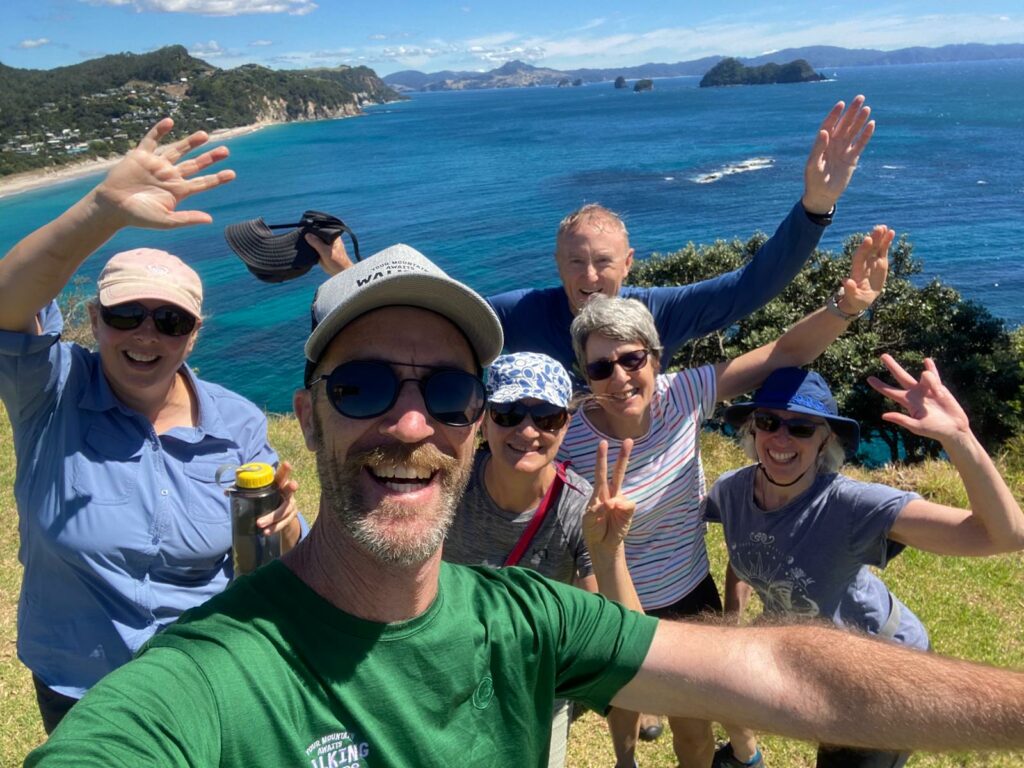- 20 May
- written by Cathy Taylor
New Zealand Hiking Tours That Will Turn You Into A Nature Nerd
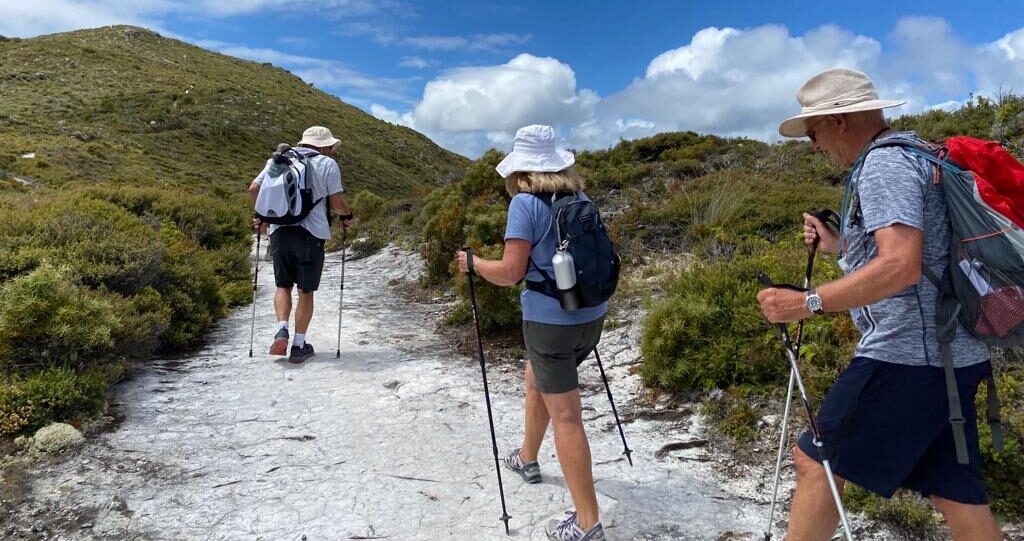
New Zealand Hiking Tours That Will Turn You Into a Nature Nerd
Your short-cut guide to the best hiking tours in the North Island of New Zealand for nature-lovers and bird nerds. At Walking Legends, we concentrate on visiting high-quality conservation areas predominantly managed by the Department of Conservation (DOC). We have a range of 7 guided hiking tour itineraries visiting these areas; Aotea/Great Barrier Island, Coromandel, Lake Waikaremoana, Tongariro National Park and Taranaki. These are the best hiking areas in the North Island and you can visit them comfortably and easily with us.
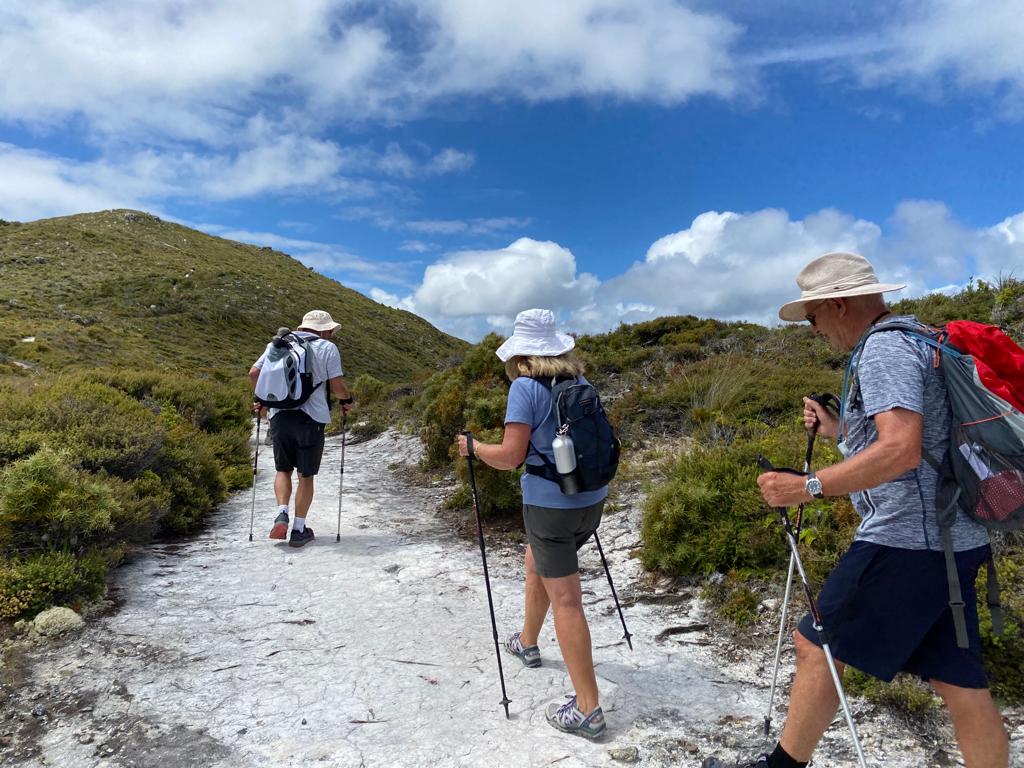
Here at Walking Legends we aren’t just walkers, we are nature-lovers. Our New Zealand guided walks have the express aim of getting you out of the main tourist centres and deep into the heart of real New Zealand. We’ve carefully selected walks for our guided walk itineraries that showcase the best biodiverse areas with high wildlife health through the North Island of New Zealand.
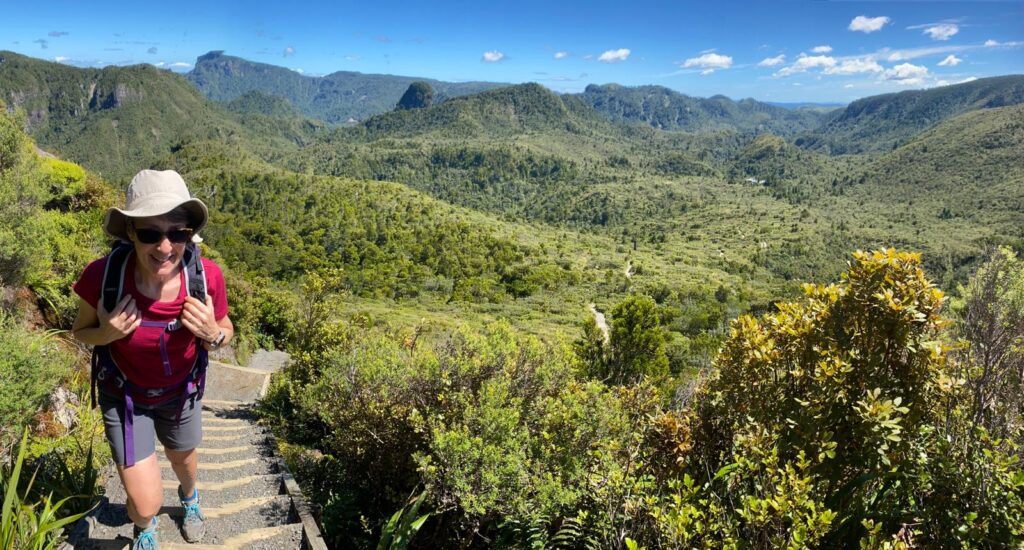
It can be tempting to arrive in Auckland and make a straight beeline south for Wellington along State Highway 1. You’ll certainly see a version of New Zealand from the State Highway, but if you’re a real nature-nerd you’ve got to get your boots on the ground out in the regions! One of those stunning regions that is well worth your consideration is Aotea/Great Barrier Island.
Great Barrier Island Escape – the best guided walking holiday near Auckland
What makes Great Barrier Island distinct from the mainland? Why is the nature on Barrier so good? Why visit it? What will you see/hear/experience that you can’t see on the mainland?
Aotea/Great Barrier Island has the best network of walking tracks near Auckland. The island is just a 30 minute scenic flight from Auckland with Barrier Air. Around 70% of the island is managed by DOC and this is growing every year. Only 1,000 residents call the island home and their strategy for the future is quite simply ‘no development.’ There is no public transport, no reticulated water or power supply and no supermarkets or central food distribution network. It’s a challenging environment that naturally attracts the eco-conscious and resourceful among us.
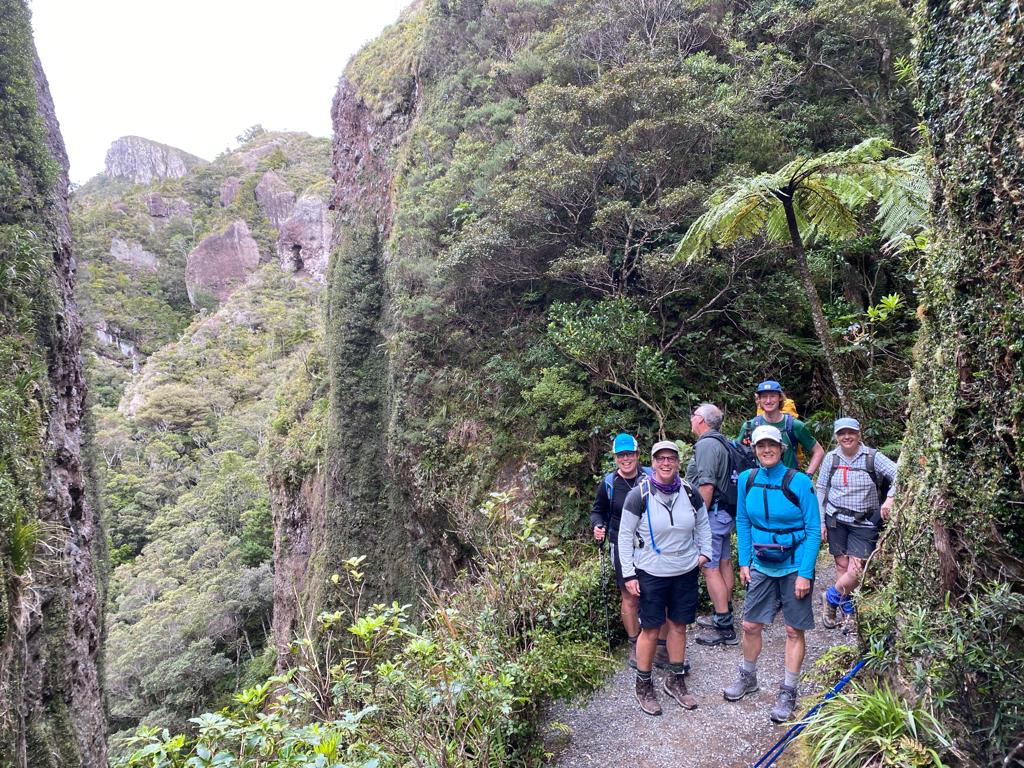
Aotea/Great Barrier Island has a distinctive local culture and flavour that is completely different from mainland New Zealand. It’s a fascinating place to visit even for Kiwi’s who’ve lived their whole lives in New Zealand. Island residents pride themselves on their commitment to a sustainable lifestyle and the social license to reduce, reuse and recycle is strong. Islanders grow their own food, use predominantly solar energy, reduce their waste wherever possible and remain really conscious of smart water useage.
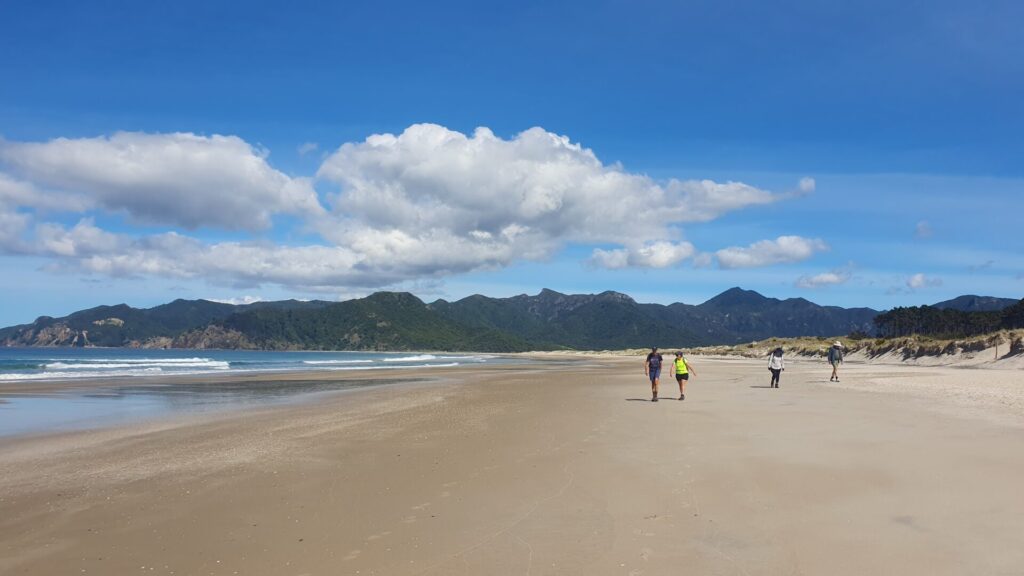
The residents of Great Barrier Island also take strong views on the care and management of the surrounding Hauraki Gulf/Tikapa Moana. There’s a strong local voice in support of the marine reserves that border the islands shores and an equally strong one in support of hunting and gathering rights. Environmentalism is at the forefront of everything islanders do, not just a hot topic at election-time.
11 Reasons Eco-Conscious Travelers Love Great Barrier Island, New Zealand
- Partly pest-free; no mustelids, deer, possums (still working on rats and feral cats) but a much lower pest burden than the mainland
- Only 1,000 residents, less human impact is evident in the forest quality
- Strong community focus on sustainability and environmentalism
- Great Barrier Island tree daisy – a species of flowering plant only found on Great Barrier Island
- Skinks, geckos, lizards; all of which are predictor species, we can judge the overall health of an ecosystem by their presence or absence
- 70% of the island is Department of Conservation managed
- Dark Sky Sanctuary – phenomenally low levels of light pollution, no street lights
- Black Petrel breeding ground on Mt. Hobson; an endemic, threatened sea bird which only breeds on Great and Little Barrier Islands
- Proximity to pest-free Little Barrier/Te Hauturu-o-Toi – the most intact native ecosystem left in New Zealand and native birdlife travels between both islands
- Marine reserves off-shore; a 1.2 million hectare Hauraki Gulf Marine Park, a habitat and home for precious species, like the Brydes whale
- BONUS for travelers – it’s more northerly location means the climate is better for hiking year-round with no technical equipment required like in the South Island. Warmer climate means wildlife are more interactive and sightings are almost guaranteed.
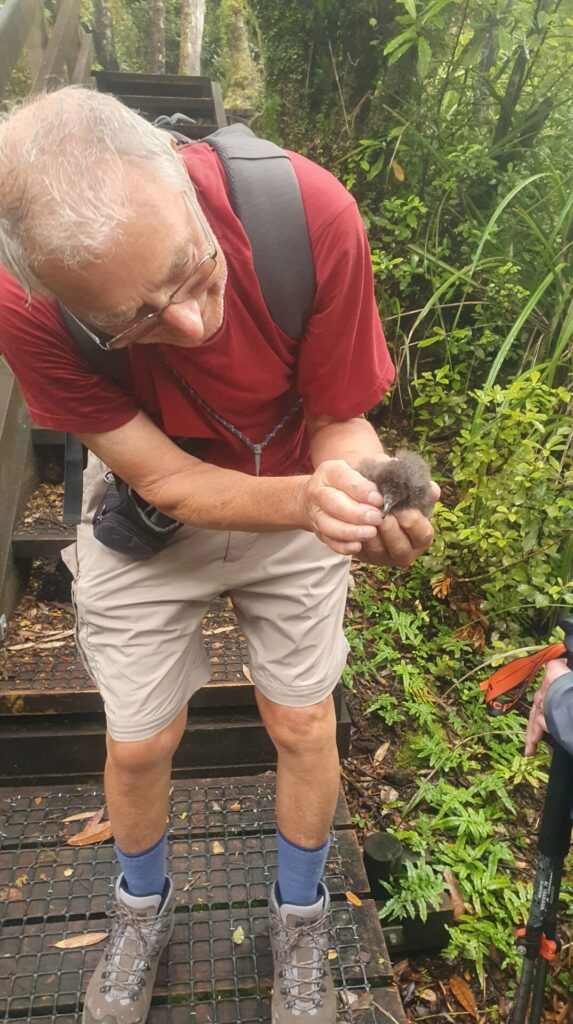
On the 4-day Great Barrier Island Escape guided hiking tour with Walking Legends, you’ll see and experience the deep, forested interior of Great Barrier Island. We’ll walk the best hikes on Aotea/Great Barrier Island, learn first-hand of the islands history and geography and get up close and personal with local native wildlife and ecosystems.
Great Barrier Island isn’t the only mainland biodiversity ark, there’s another one in the heart of the North Island, a 4-hour drive east of Rotorua, in the Te Urewera area – Lake Waikaremoana.
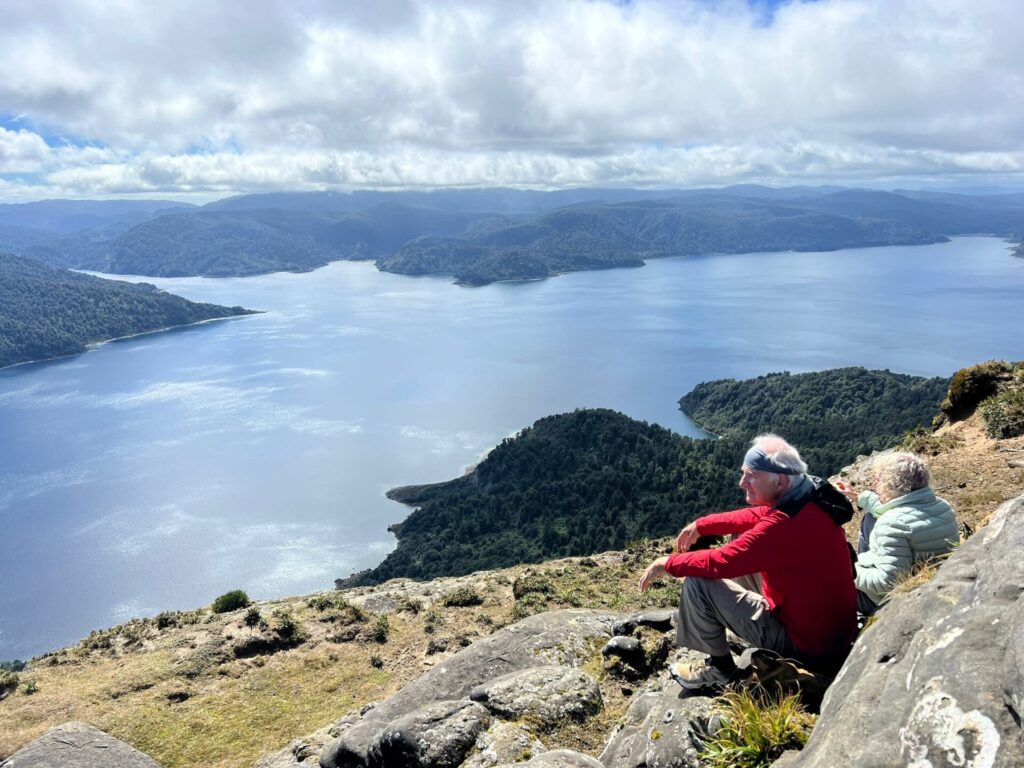
Lake Waikaremoana Discovery Tour – the best multi-day walk near Rotorua
There aren’t many corners of the Earth that you can go to these days to experience true silence. Or at least the kind of silence we used to have 50 years ago. The level of ambient sound that exists in the background of our daily lives is getting louder and we don’t realise until we go somewhere virtually uninhabited.
There was a time when the world was slower, quieter. In fact, most of us probably don’t even remember what that was like. The time before the dings and woops of phone notifications, alarms, email arrivals, doorbells, reversing beeps on rubbish trucks, the hum of constant traffic and airconditioning units, voices and machinery. Lake Waikaremoana is the only place left in the North Island where you can escape the aural barrage and drink in some peace.

A 4-hour scenic drive east of Rotorua puts you on the shores of Lake Waikaremoana. The lake is the epicentre, wrapped in a deep blanket of 212,000 hectares of thick forest protecting you from civilisation. And the silence is real.
8 Reasons Nature Nerds Fall in Love with Lake Waikaremoana, Te Urewera
- Under-water petrified forest: just below the surface of Lake Waikaremoana is a petrified forest. The bare, eerie branches reach upwards out of the cold depths. These trees used to border the ancient Waikaretaheke river through the valley. A landslide 2,200 years ago blocked the river outlet with huge sandstone slabs and water backed up to form the lake, rising higher up the river margins and encasing this forest in a watery grave.
- Cloud-forest : or ‘goblin forest’ that requires a very specific set of climatic conditions to occur. High rainfall and high humidity gathering around landforms of specific altitudes allow the microclimate to produce its own clouds. Panekire Bluff has exactly the right conditions to produce ‘cloud forest.’ On our way from Onepoto up the Panekire Bluff track we’ll notice the blanket of moss and epiphytes getting thicker and heavier as we climb higher.
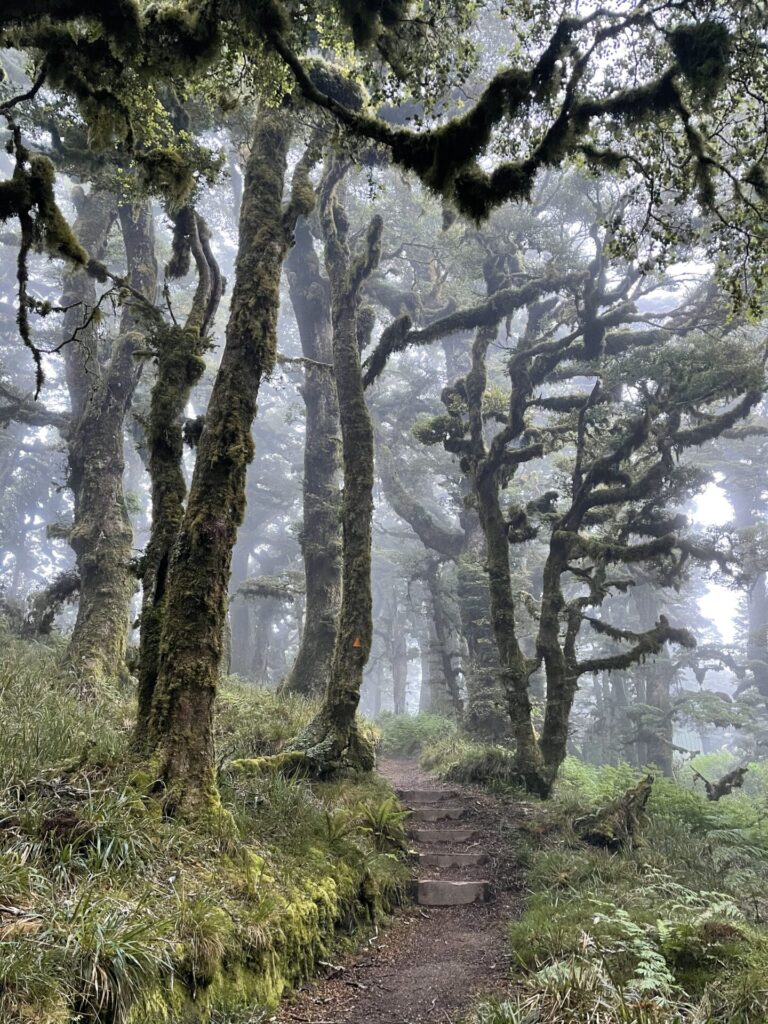
- Kaipo Bog – 11,500 year old montane peat bog (that’s just a build-up of plant remains) containing 11 tephra (layers of rock fragments ejected by volcanoes) from the Holocene period.
- A series of unique ecosystems, huge variation in topography and vegetation patterns
- Rimu and tawa forest, with some pockets of beech
- Pest plants mainly confined to forest margins
- Native red mistletoe and forget-me-not
- Restricted access to lake water for some types of boats; eg: no jet skis, house boats or float planes.
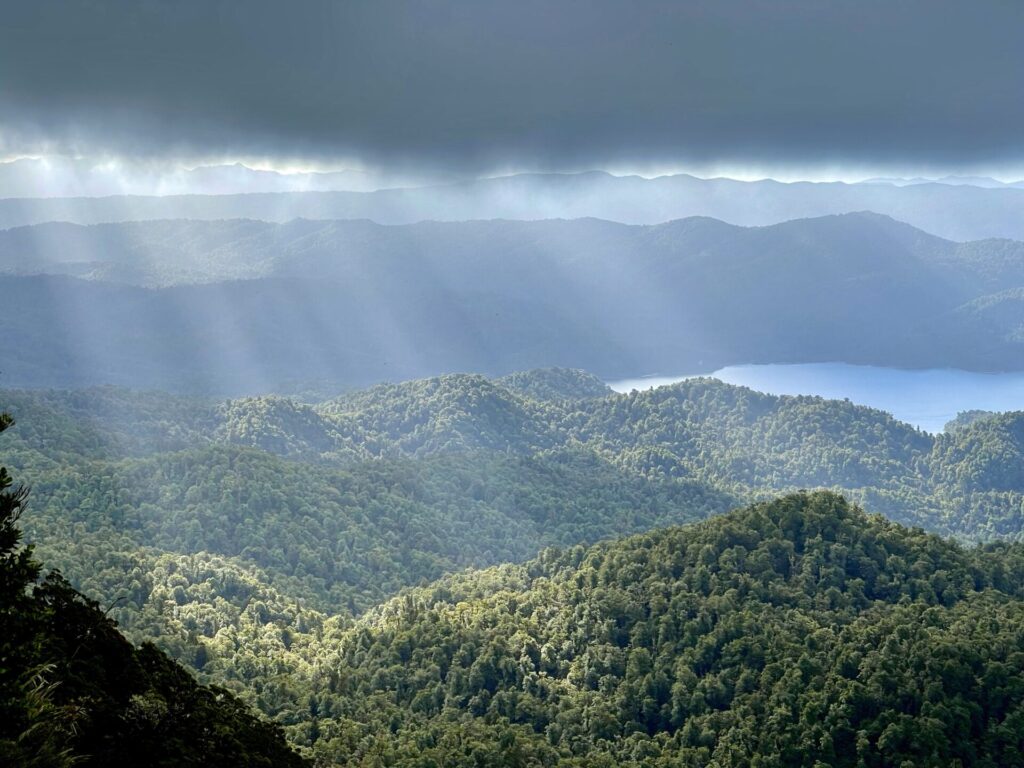
On the 4-day Lake Waikaremoana Discovery Tour guided hiking holiday with Walking Legends we’ll show you the deepest reaches of the Te Urewera forest and the Whirinaki Forest Park/Te Pua-a-Tane. We’ll stay in comfortable lakeside accommodations with ensuites, and spend our days hiking the best tracks in and around Lake Waikaremoana. This area is home to the unique Ngai Tuhoe people, a Maori tribe that identifies as ‘children of the mist.’ In 2014, the Te Urewera area achieved legal personhood status and Ngai Tuhoe regained official guardianship of the land.
If you’re looking for a sustainable, low-impact way to experience nature in New Zealand, try one of our New Zealand hiking tours. For the best New Zealand hiking tours and guided walks, with local people who know the areas, come with Walking Legends. We keep our group walking tours intentionally small to minimise our footprint and give you the most authentic hiking experience. Protecting our wildlife and biodiversity is a core principle of our ecological ethos and we’d love to show you some of the spectacular landscapes and fascinating environments we are lucky enough to call home.
Give our friendly team a call, or email to learn more:
NZ Freephone 0800 925 569 (WALK NZ)
AUS Freephone 1800 646 584
International 0064 7 533 3157
We look forward to hosting you on one of our New Zealand hiking tours soon!
